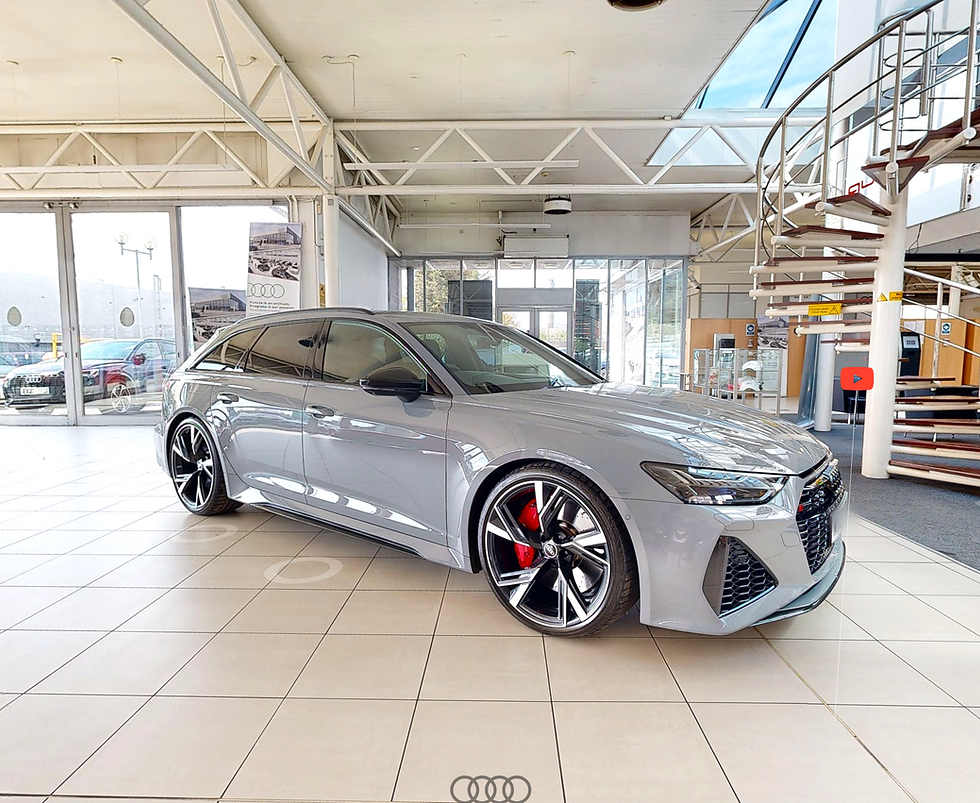McLaren P1 Virtual Tour
- Auto View Point
- Oct 17
- 3 min read
Discover the McLaren P1 360 Virtual Tour and see where the future of performance began.
The McLaren P1 isn’t just a car; it’s a technological masterpiece that redefined what a hypercar could be. Unveiled at the 2013 Geneva Motor Show, the P1 symbolised McLaren’s vision to merge electrification with extreme performance. Born from Formula 1 innovation and cutting-edge engineering, it remains one of the most advanced and celebrated hypercars ever created.
Born from Innovation
The McLaren P1’s story begins with a simple yet ambitious goal: to create the best driver’s car in the world, both on the road and on the track. Drawing directly from McLaren’s Formula 1 expertise, the P1 introduced active aerodynamics, hybrid power, and carbon fibre technology at a level previously unseen in road cars.
Every element of the P1 was crafted to serve performance. From its carbon fibre monocoque chassis to its active suspension and downforce management system, the car continuously adapts to driving conditions. The result is a machine that feels alive, agile, intelligent, and brutally fast.
Performance and Engineering
Powering the McLaren P1 is a 3.8 litre twin turbocharged V8 engine paired with an electric motor, producing a combined output of 903 horsepower and 900 Nm of torque. Power is delivered through a 7 speed dual clutch transmission, propelling the P1 from 0 to 62 mph in just 2.8 seconds and on to a top speed electronically limited to 217 mph.
The hybrid system isn’t just about efficiency; it’s about performance enhancement. The instant torque from the electric motor eliminates turbo lag, while the petrol engine delivers relentless acceleration. In Race Mode, the P1 lowers itself by 50 mm and extends its active rear wing, generating up to 600 kg of downforce.
This fusion of hybrid technology and raw power created a new era of hypercars, one where electricity enhanced emotion rather than replaced it.
Design and Aerodynamics
The McLaren P1’s design is as functional as it is beautiful. Its flowing bodywork is sculpted to manage airflow with surgical precision, ensuring stability at extreme speeds. The dramatic curves, teardrop cabin, and dynamic stance aren’t just for show; they’re born from hundreds of hours in the wind tunnel.
The P1’s MonoCage carbon fibre structure provides exceptional rigidity while keeping the weight to just 1,490 kilograms. Every panel, vent, and surface works in harmony to reduce drag and increase cooling. The rear wing automatically adjusts its angle and height depending on speed, braking, and cornering, embodying McLaren’s philosophy of form follows function.
Inside, the cockpit is pure minimalism. Lightweight carbon fibre dominates the interior, complemented by Alcantara and exposed structural elements. Every switch and display is positioned for the driver’s benefit, creating an environment that feels more like a fighter jet than a road car.
Exclusivity and Legacy
Only 375 examples of the McLaren P1 were produced between 2013 and 2015, each one hand assembled at the McLaren Production Centre in Woking, England. This exclusivity, combined with its groundbreaking hybrid technology, cements the P1’s place in automotive history as part of the Holy Trinity of hypercars, alongside the Porsche 918 Spyder and Ferrari LaFerrari.
The P1 proved that hybrid power could enhance, not dilute, driving passion. It laid the foundation for future McLaren models like the Speedtail and Artura, influencing the entire direction of performance engineering for the decade that followed.

Explore the McLaren P1 360 Virtual Tour
Our McLaren P1 360 Virtual Tour lets you explore every inch of this hybrid masterpiece in stunning detail. Step into the driver’s seat, admire the carbon fibre craftsmanship, and study the aerodynamic bodywork that makes the P1 so iconic. From the sculpted rear diffuser to the high mounted exhausts, experience the innovation and artistry that define one of McLaren’s greatest achievements.


